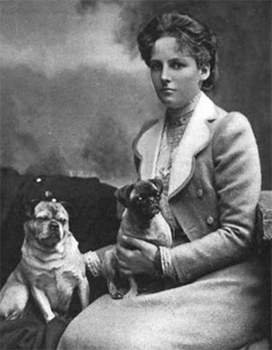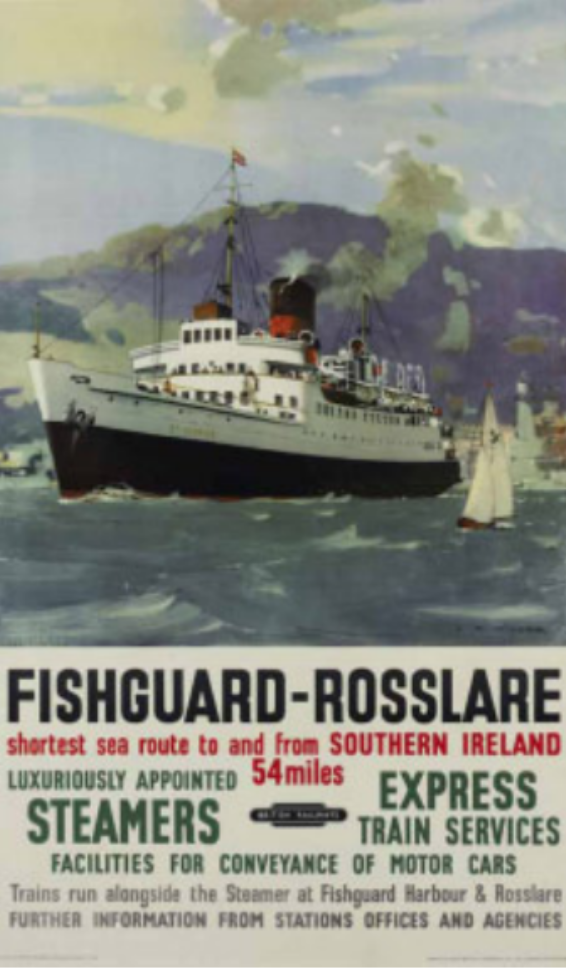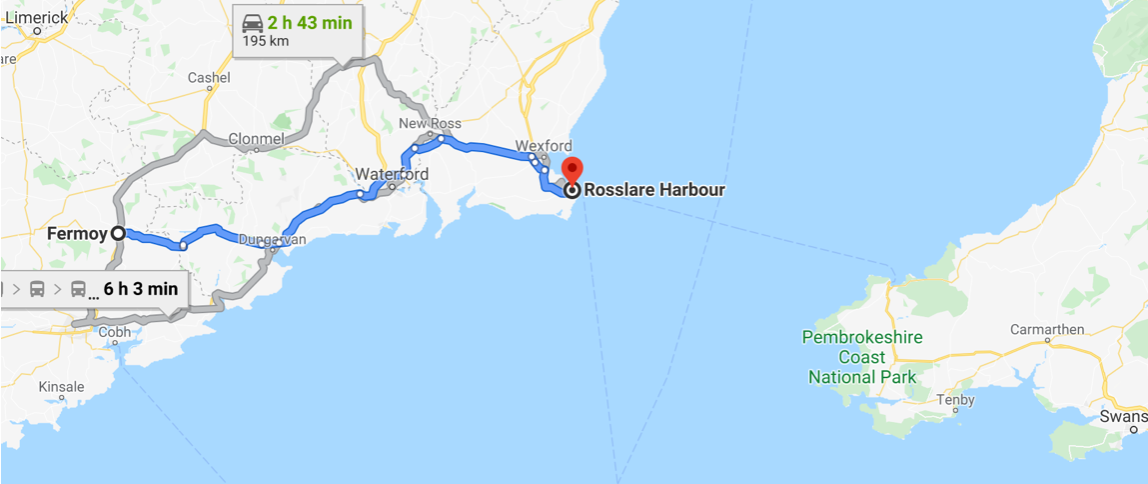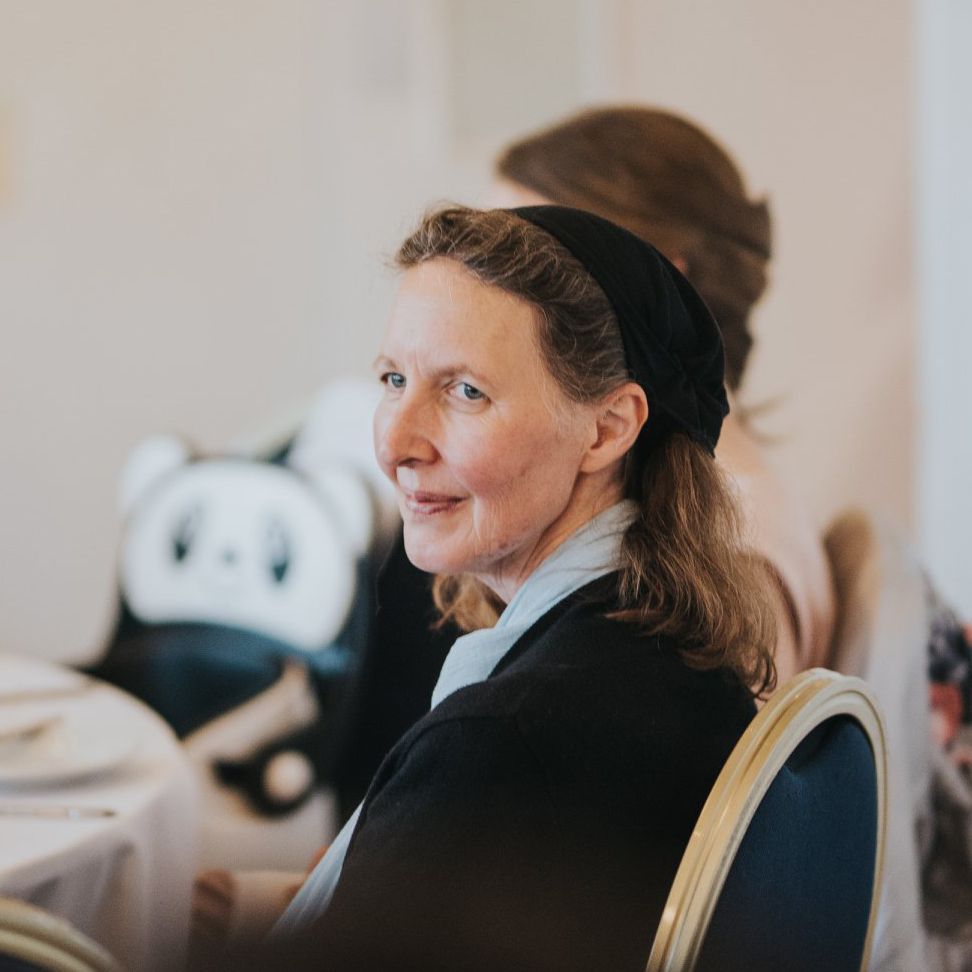11th July - Ninth Letter to Poppy
Secret diary: Sun Husband.
Official diary (11th July): No entry
Location: Brennan’s (Smithstown?)
Sunday
My darling old Pip,
Are you sure the baby only weighs 6 ¼ ounces, as I am told this is unusually light; lets hope he will start putting on weight soon. Everyone seems to have been very kind to you. Havn’t seen any notice in the Irish Times yet but it doesn’t matter now that your letters are turning up. I got your Thursday & Friday!!! Letter on Saturday which is very good considering the roundabout way they have to come to get to me.
I have now been hidden away for over a fortnight, they will get very tired of me soon. I get a good deal of things to pass the time with, one way and another, and everyone very kind, but I am sure both my care-takers and I will be glad when it is over. I suppose you have very little news of Percy.
Cutlett seems to be going very strong in spite of his weight, I feel sure he is quite a nice boy in spite of his mother and father.
It will be very useful having Marjory Bax to go to while we are looking for a house and settling in; though she is rather far off if we go house hunting in Devon. The best thing will be to earmark a lot of houses down that way, and spend a week down there doing them all at once. You are probably allowed up today; it is nice for you having a lot of people coming in. Give my love to nurse and Lady Constance when you see them.
If you are having this sort of weather, it wont be much fun in a bath chair in the Park. The Roslane boat doesn’t appear to be running now, and passenger trains to Dublin very scarce. But I shall get over somehow as soon as I am released.
your c
Ninth Letter sent to Mrs C.H. Tindall Lucas, 1 Cleveland Gardens, Hyde Park LONDON W2 postmarked BANDON 6 15pm 13 July 1920
What a state poor Poppy must have been in mixing up her pounds and her ounces, or maybe that was one of the many lessons she skipped when her father pulled her out of the Nursery to go hunting and fishing. It's quite touching that not one of CHTL's 'Keepers' stated the obvious to him - that a baby couldn't possibly have weighed so little and survived! The 'lads' were as ignorant as CHTL when it came to babies: after all in those days infants fell under the strict demarcation of 'women's work'. The general came from another world of refinement and delicacy so maybe they thought that upper class British babies were suitably refined and delicate?

The ability of CHTL to carry on as normal planning ahead for leave and for the search for a suitable house in Devonshire is quite extraordinary. Of course a lot of this was due to him wanting to keep Poppy's spirits up: however there is a definite feeling in his letters that he totally believed that this would be his future.
Having survived against the odds through the deadliest of World War One battles, at times missing death by a step or two to the left or right of him, CHTL was not going to entertain the ridiculous idea that now his time was up. Even the difficulty of train and ferry strikes would not stop him getting back to see his wife and son. Somewhere deep down implanted in him from his Quaker roots or from those tedious daily family prayer sessions was the gem: 'Where there is no vision, the people perish’ (Proverbs 29:18). CHTL would not perish as long as he had his vision for the future and he fully intended that Poppy should hold on to that vision too - seeing beyond this present trouble to the happy times that lay ahead. They both had to survive this ordeal for the sake not of themselves but also for their 6 ¼ ounce offspring!
Brennan’s of Smithstown
There have been several stories from different sources of General Lucas being held in Smithstown. None of the information from CHTL’s official diary or from his ‘Secret Diary’ at first sight obviously supports this. However, when I heard the following story, told by Conor Lenihan, I was inclined to look again at the evidence:
“My grandmother on the maternal side was Ita Brennan. Her father John Brennan was a medical Doctor who moved from Clare to Eyrecourt, County Galway where he practised.
Ita Brennan, her sister Etna and brother Brendan Brennan were frequently sent for the summers to holiday with their cousins at Smithstown House.
While there my grandmother had vivid memories of playing with General Lucas as a child in the back garden. The family played cards, blind man's buff and other entertaining past times with him. He liked his whiskey and got on very well with the family.
My grandmother and her sister Etna had family photos taken with them and General Lucas. I was shown these photographs as a child He stayed in an upstairs room in the house with two men, unknown to the family, on guard over him.
They had a dug out in the garden, which was covered by cut out grass, which was in case there was any raid by the British forces on the house.
My grandmother's family were cousins of Michael and Austin Brennan, leading figures in the IRA. However, one of the reasons why the General was held in this home, was because the authorities never drew the family connection.
There was a monkey puzzle tree in the garden of Smithstown and this was referred to my by grandmother in relation to the General. The family received or sent letters to General Lucas years later and there was reference in the correspondence that they might meet up.
There may in fact have been a meeting in London but I cannot be sure on this point. The family lore definitely shows Lucas to have been a nice man and he freely admitted he was having a pleasant break during his capture.
He was certainly of no mind to attempt an escape but would often ask whereabouts in the country he was.”
The story that the general played games with the children in the back garden, rings true as that was just the type of person that CHTL was. Despite being a senior officer, CHTL was not above having fun with the lower ranks and with children. In France for instance:
Went for a short walk this afternoon & found the provost marshall, the salvage officer & the interpreter having a snow ball battle with a dozen small boys so joined in & got properly warm.
Letter to Poppy, Jan 2nd 1918
The children in Belgium were also not intimidated by the ’General’ and boldly made their requests to him:
Went for a walk this afternoon; 2 small girls aged about 8 & 10 accompanied me part of the way, they invited me to come home and have some coffee with them, which I had to refuse as it was out of my way; they also begged me to send some soldiers to live in their village to brighten things up a bit.
Letter to Poppy, Belgium Feb 11th 1919
CHTL was not, as some adults may have been, affronted by the cheek of these children. They were speaking their minds and he respected them for it as well as being rather amused by their boldness.
For children who had grown up in a climate of fear of the military, in Belgium, France as well as in Ireland, there must have been something about this British officer which made him so approachable. CHTL had his tough side but he did not frighten children: they seemed to know that this imposing British general had a warm, soft spot hidden away underneath the stern exterior! He found it hard to stand up to them. In France in one of his billets there were “2 nice little girls (all right!! Ages under 12) who take a great interest in me…This afternoon Col Crawford & I had a snow ball fight with the two little girls in the house, & would have been badly beaten if his servant had not come to our rescue & taken them in flank.” (Letter to Poppy Dec 26th 1917) The little girls won in the end as CHTL went to a great deal of trouble and: “bought some sweets for the two little girls in the house.” (Dec. 28th 1917). And sweets were hard to find in war-torn France in 1917!
CHTL desire for children of his own was strong and when he and Poppy finally had their family, he put a lot of effort into being a father. He was very proud of his sons but he was also delighted when he had a daughter. She adored her father and was no doubt spoilt by him!
Ita and her siblings playing with the general in Smithstown, is very believable. CHTL would have loved the distraction. It’s possible that the ‘July 10th. I went back to Brennan’s’ official diary entry did not mean back to Brennan’s in Clonmoney, but could be Brennan’s in Smithstown. It’s known that Brennan’s in Clonmoney was of interest to the British and that houses around it were searched on the 14th July. CHTL makes a lot of describing the Brennan’s of Clonmoney family, could this have been to deflect any attention away from other Brennan family members?
The Secret Diary records that CHTL returned to the ‘cottage’ - Hasting’s on the 13th and there helped with the hay making. This was left out of CHTL’s official report, so one wonders what else could have been omitted? We can’t find a definite place for Ita’s story in the timeline. That’s not to rule it out as being untrue; but that it’s like a jigsaw piece that can’t yet be found its place in the overall picture which is gradually being revealed in the puzzle.
One thing is for sure, that if there were children involved, CHTL would have done his upmost to protect them. He was very anxious that there should be no reprisals for his abduction. He’d heard about children being caught in the cross-fire in Derry and other places and he’d have wanted to avoid that happening to any of children in the houses that he was held in.
There is no evidence of letters being exchanged with the Brennans after CHTL escaped, although he did have unnamed ‘friends’ in Ireland who supplied him with copies of the ‘Where did General Lucas go?’ Ballad and Irish newspaper cuttings.
Lady Constance
The Lady Constance that is frequently referred to in CHTL’s letters is not someone that can be easily identified. One of the most likely candidates is Lady Constance Mary Butler (26 March 1879 — 20 April 1949) who was an Anglo-Irish noblewoman, yachtswoman and antiquarian and had a career in radiography. She was a medical volunteer during World War I running a depot in London for Red Cross supplies. This might have been where CHTL met her. His mother and at least one sister were involved with the Red Cross. CHTL’s mother was the vice-president of the British Red Cross in the Hitchin district.

On April 15, 1915 a Red Cross hospital for convalescents was opened at The Maples in Bedford Road Hitchin. Mrs Tindall Lucas was a central figure in this and her daughter Cecil was the first Sister-in-charge. Lady Constance would have been someone that they would have contacted for supplies for the hospital. This Lady Constance was a very beautiful woman, a lover of dogs (pugs) and very sporty, with a strong personality very much like CHTL’s mother and sisters. It’s no wonder that CHTL and Poppy admired her.
A HOSPITAL STORE
NEW PREMISES OF A RED CROSS DEPARTMENT.
The medical and surgical requisites department of the British Red Cross Society and Order of St. John was recently transferred to new premises in South-crescent, Store-street, W.C. There for the first time under one roof Lady Constance Butler, who, assisted by the Hon. Winifred Douglas-Pennant, is in charge of this department, has all her stores at hand.
In the early days of the war, Lady Constance explained to a representative of The Times, one loose horse-box, with the later concession of two stalls, in the stable at Devonshire House was all the space given to the housing of medical stores. As the demands on the department grew the need for further accommodation was felt, and even after the move to 83, Pall-mall, the space available was not sufficient, and the stores were scattered in various stables, and in some cases even left with the firms from which they had been ordered until they were needed. There was a constant disadvantage when heavy requisitions were received for things urgently needed. Now there is ample space, and the new premises, which were formerly a motor works and contains a huge lift that can bear the weight of three tons, have the further advantage of allowing goods that arrived on a wet day to be unloaded in the building, as there is space for a motor to enter.
On the first floor is Lady Constance Butler’s office, and there also are kept boxes of surgical instruments of all kinds. In the floor above on vast shelves are sorted out hundreds of different stores. On the third floor many bales of stores are ready for transference to depleted shelves below and also splints, crutches, and pads for splints. Down in the basement are further stocks and also the Red Cross packing cases.
Lady Constance Butler deals with every requisition, whether it be large or small, herself; 60 is the daily average and about 500 of the Red Cross boxes are dispatched to hospitals, our own and those of our Allies, every week.
The Times London, England 27 Dec 1915, Mon • Page 5
Rosslare boat
This was the ferry of choice for those wishing to cross the Irish Sea. It was the shortest route and the quickest way for returning soldiers from Southern England and Wales to get home. Today, by car and faster roads the trip from Fermoy to Rosslare takes just over 2 hours. In 1920, this probably was at least 3 hours, if one had a reliable car. With the strikes, there must have been a lot of concern about how one would cross the Irish Sea. It was a journey without many alternatives.



